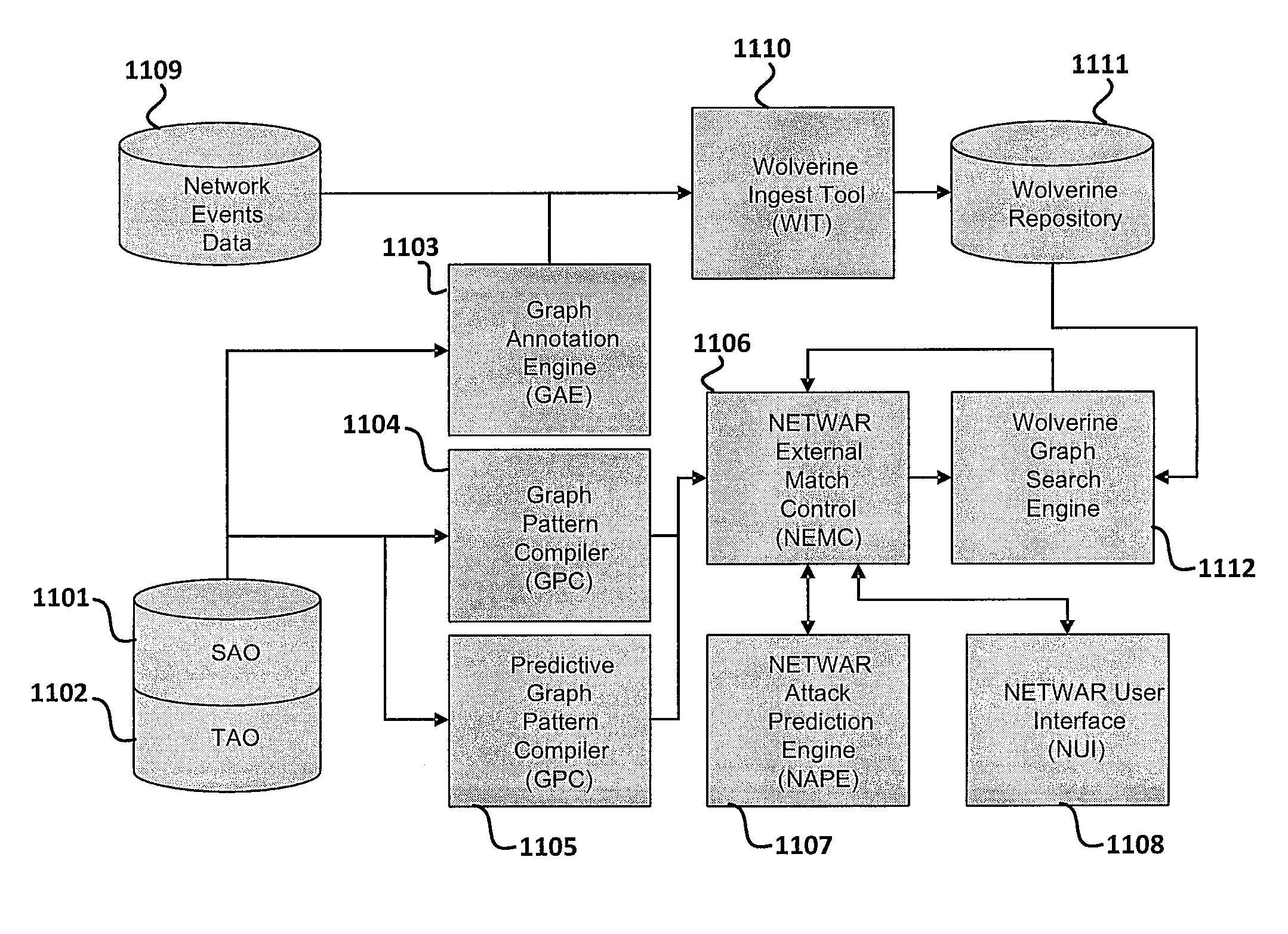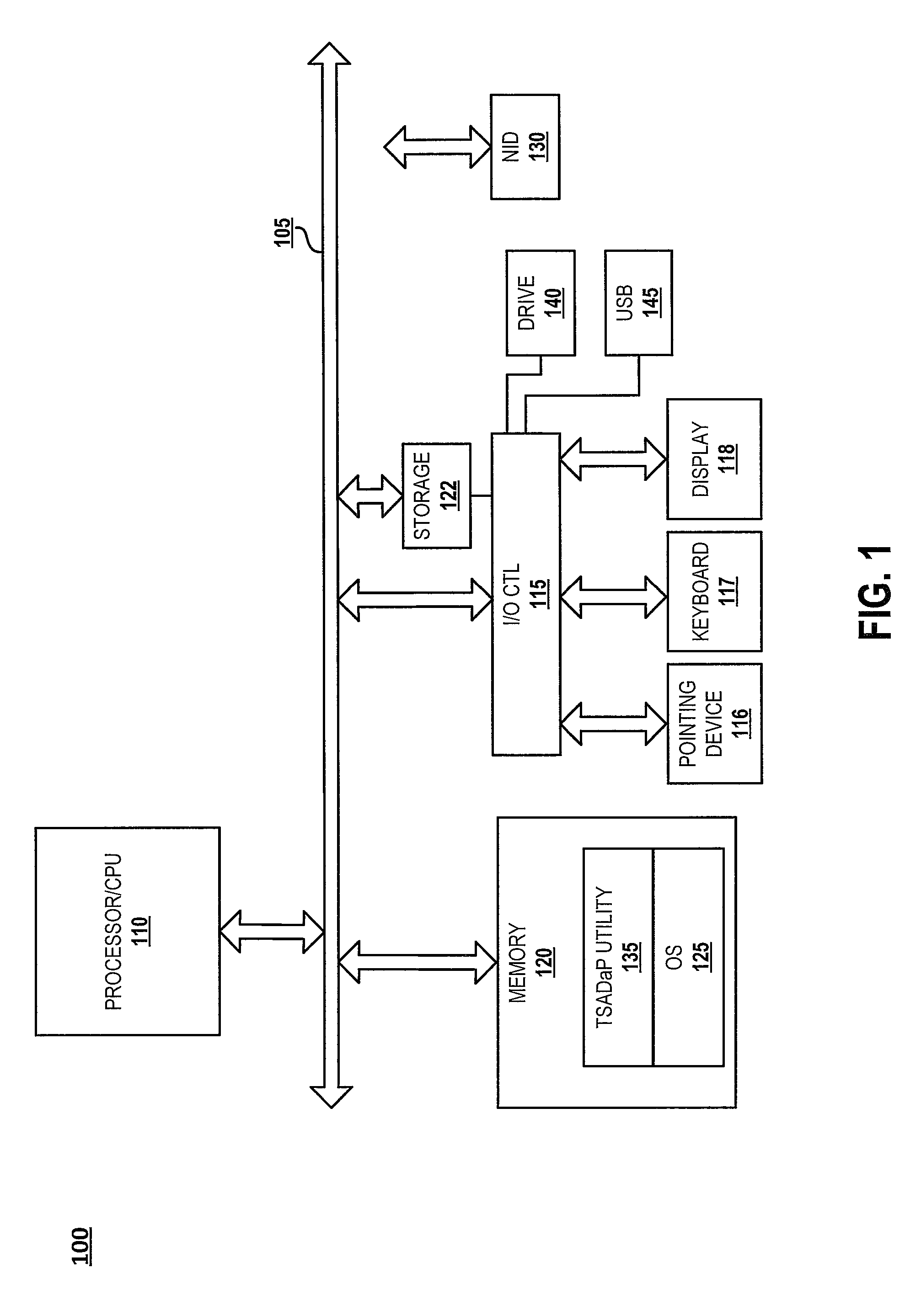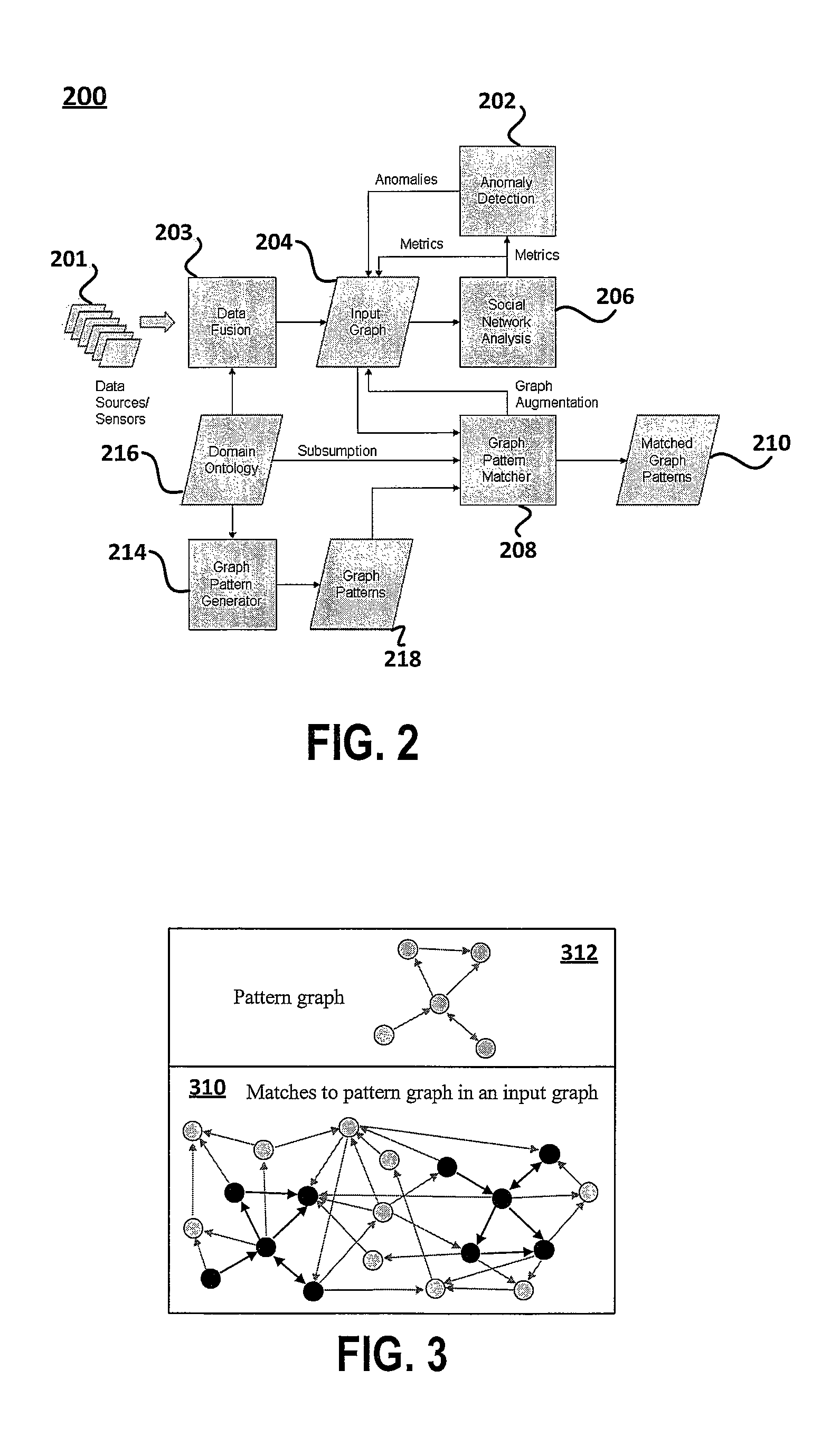Tactical and strategic attack detection and prediction
a technology of strategic attack and computer network, applied in the field of computer processing of data, can solve the problems of increasing sophistication and automated intelligence-driven cyber attacks, difficult to defeat or even understand with current technology, and the adversary that mount determined attacks using these new cyber techniques is at a great disadvantage, so as to reduce the time required, the effect of efficient and effective evaluation
- Summary
- Abstract
- Description
- Claims
- Application Information
AI Technical Summary
Benefits of technology
Problems solved by technology
Method used
Image
Examples
Embodiment Construction
[0014]Disclosed is a method, system and computer program product for efficiently and effectively evaluating both tactical and strategic threats to protect an individual network or collection of interrelated / affiliated networks by computationally recognizing existing threats, reducing the time required to act on the information of an existing / ongoing threat, and providing predictive capability for emerging or future threats. Existing network data is sensed using multiple software / hardware sensors and forwarded to a NETWAR device. The NETWAR device is computer device that executes a Tactical and Strategic Attack Detection and Prediction (TSADaP) utility, which performs a series of functions, including: generating a NETWAR user interface for input, manipulation and control of information, data and / or results by a system analyst; representing input data as a graphical form of nodes and edges; sampling and evaluating existing network data using an underlying graph-based search engine; pe...
PUM
 Login to View More
Login to View More Abstract
Description
Claims
Application Information
 Login to View More
Login to View More - R&D
- Intellectual Property
- Life Sciences
- Materials
- Tech Scout
- Unparalleled Data Quality
- Higher Quality Content
- 60% Fewer Hallucinations
Browse by: Latest US Patents, China's latest patents, Technical Efficacy Thesaurus, Application Domain, Technology Topic, Popular Technical Reports.
© 2025 PatSnap. All rights reserved.Legal|Privacy policy|Modern Slavery Act Transparency Statement|Sitemap|About US| Contact US: help@patsnap.com



